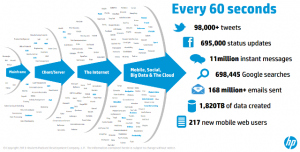Bulk Collection of Signals Intelligence: Technical Options (2015)
Description:
The Bulk Collection of Signals Intelligence: Technical Options study is a result of an activity called for in Presidential Policy Directive 28, issued by President Obama in January 2014, to evaluate U.S. signals intelligence practices. The directive instructed the Office of the Director of National Intelligence (ODNI) to produce a report within one year “assessing the feasibility of creating software that would allow the intelligence community more easily to conduct targeted information acquisition rather than bulk collection.” ODNI asked the National Research Council (NRC) — the operating arm of the National Academy of Sciences and National Academy of Engineering — to conduct a study, which began in June 2014, to assist in preparing a response to the President. Over the ensuing months, a committee of experts appointed by the Research Council produced the report.
Believe it or not, you can’t copy-n-paste from the pre-publication PDF file. Truly irritating.
From the report:
Conclusion 1. There is no software technique that will fully substitute for bulk collection where it is relied on to answer queries about the past after new targets become known.
A key value of bulk collection is its record of past signals intelligence that may be relevant to subsequent investigations. If past events become interesting in the present, because intelligence-gathering priorities change to include detection of new kinds of threats or because of new events such as the discovery that an individual is a terrorist, historical events and the context they provide will be available for analysis only if they were previously collected. (Emphasis in the original)
The report dodges any questions about effectiveness or appropriateness of bulk collection of signals data. However, its number one conclusion provides all the ammunition one needs to establish that bulk signals intelligence gathering is a clear and present danger to the American people and any semblance of a democratic government.
Would deciding that all Muslims from the Middle East represented potential terrorist threats to the United States qualify as a change in intelligence-gathering priorities? So all the bulk signals data from Muslims and their contacts in the United States suddenly becomes fair game for the NSA to investigate?
I don’t think any practicing Muslim is a threat to any government but you saw how quickly the French backslide into bigotry after Charlie Hebdo. Maybe they didn’t have that far to go. Not any further than large segments of the U.S. population.
Our National Research Council is too timid voice an opinion other than to say if you don’t preserve signals records you can’t consult them in the future. But whether there is any danger or is this a good policy choice, they aren’t up for those questions.
The focus on signals intelligence makes you wonder how local and state police have operated all these years without bulk signals intelligence? How have they survived without it? Well, for one thing they are out in the communities they serve, not cooped up in cube farms with other people who don’t have any experience with the communities in question. Simply being a member of the community makes them aware of new comers, changes in local activity, etc.
Traditional law enforcement doesn’t stop crime as a general rule because that would require too much surveillance and resources to be feasible. When a crime has been committed, law enforcement gathers evidence and in a very large (90%+) number of cases, captures the people responsible.
Which is a interesting parallel to the NSA, which has also not stopped any terrorist plots as far as anyone knows. Well, there as that case in the State of Georgia where two aging alcoholics were boosting about producing Ricin and driving down I-285 throwing it out the window. The government got a convicted child molester to work as in informant to put those two very dangerous terrorists in jail. And I don’t think the NSA was in on that one anyway.
If the NSA has stopped a major terrorist plot, something that actually was going to be another 9/11, you know it would have been leaked long before now. The absence of such leaks is the best evidence for the lack of any viable terrorist threats in the United States that I can think of.
And what if we stop bulk signals data collection and there is another terrorist attack? So, what is your question? Bulk signals collection hasn’t stopped one so far so if we stop bulk signals collection and there is another terrorist attack, look at all the money we will have saved for the same result. Just as a policy matter, we shouldn’t spend money for no measurable result.
If you really think terrorism is a threat, take the money from bulk signal data collection and fund state and local police hiring, training and paying (long term, not just a grant) more local police officers out in their communities. That will do more to reduce the potential for all types of crimes, including those labeled as terrorism.
To put it another way, bulk signal data collection is a form of wealth sharing, wealth sharing from the public treasury to contractor’s. Wealth sharing that has been shown to be ineffectual against terrorism. Why continue it?
